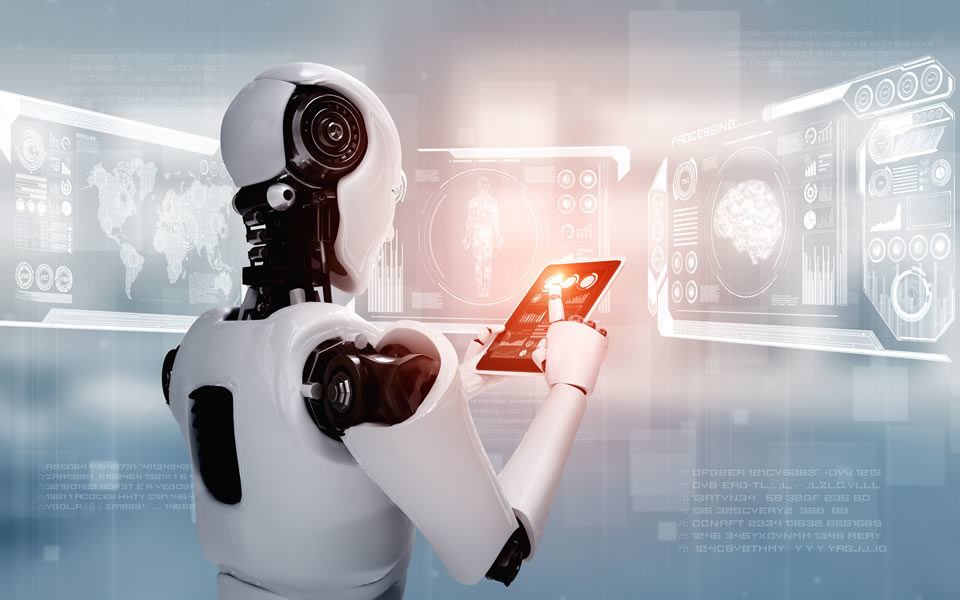Taking Advantage of Tax Credits Available for Robotic Process Automation Projects
RPA + R&D = ROI
By Rob Drover, Vice President of Business Solutions, Marcum Technology
Robotic Process Automation (RPA) is already a game changer – allowing you to automate any data entry task. Did you know it can also help save money, since it may be eligible for the Research and Development tax credit? No white lab coat necessary.
Background
The research and development (R&D) tax credit encourages businesses to invest in the development of new or improved business components, in order to promote economic growth. The R&D tax credit provides more than $10 billion of tax savings annually to U.S. businesses in diverse industries. Where is it underutilized? With small and medium-size companies. This is money going unclaimed by the types of businesses that most need it.
The federal R&D tax credit provides significant benefits to taxpayers with up to 10% of qualifying expenses (eligible wages, contractor costs, and supplies). This benefit is a potential one-for-one reduction in tax liability for the current and past three years. Accordingly, the credit can provide immediate and long-term tax relief that can increase cash flow and capital for businesses. Many states also have R&D-type credits that follow federal qualification guidelines.
General Qualification Guidelines
The R&D credit is calculated by determining the amount of Qualified Research Expenses (QREs) for the company’s current and prior years. The QREs are made up of wages and supplies used in the R&D development and 65% of third party contractor expenses.
In order to meet the definition of a qualifying research expenditure, research activities performed in the United States need to satisfy a four-part test:
- The work helps develop a new or improved business component (product, process, technique, formula, invention, or computer software component).
- The activities are performed to discover information that is technological in nature. The activities can involve physical, biological, engineering, or computer sciences.
- The research is performed to eliminate technical uncertainty, determine if a desired result could be achieved, how to achieve it, or determine the specific design of a product.
- The activities will include a process of experimentation involving identification of the technical uncertainties, alternatives to consider in eliminating the uncertainties and a process for evaluating alternatives.
Examples of Potentially Qualifying RPA Activities
So how does Robotic Process Automation fit in? There are many RPA activities that may qualify for R&D tax credits:
- Conceptualization of new or improved processes that the RPA application development process can help automate (e.g., the bot)
- Defining requirements for RPA applications
- Ongoing improvements to the RPA application development
- General algorithm development
- Integration of systems with RPA applications
- Prototype and development of RPA applications
- Testing and validation of RPA applications
- General enhancements to RPA applications
- Integration of AI and Machine Learning processes/activities
- RPA infrastructure development
Examples of Potentially Qualifying Expenses
- Wages of employees working on qualified RPA activities (i.e., developers, application specialists, business unit subject matter experts)
- Employees supervising these roles
- Contractors hired to assist/facilitate in qualified RPA activities
- Cloud computing costs
- RPA development costs
Examples of Potentially Non-Qualifying Activities within an RPA Project
Not every facet of an RPA project will qualify for the tax credits, however, including:
- General software licenses and fees
- Routine maintenance on the software (e.g., installation of a new version of the RPA software)
- Routine maintenance on any part of the infrastructure (e.g., server upgrades, server maintenance)
Whether or not you wear a white lab coat, Research & Development tax credits offer tangible savings for businesses using RPA. The key is to examine the facets of your RPA activity to find the potential savings.
Contact the Marcum RPA team for assistance in determining whether your RPA program may qualify: Rob Drover, Marcum Technology Vice President of Business Solutions or Bill Kuhlman, Marcum R&D Tax Credits Leader.




















